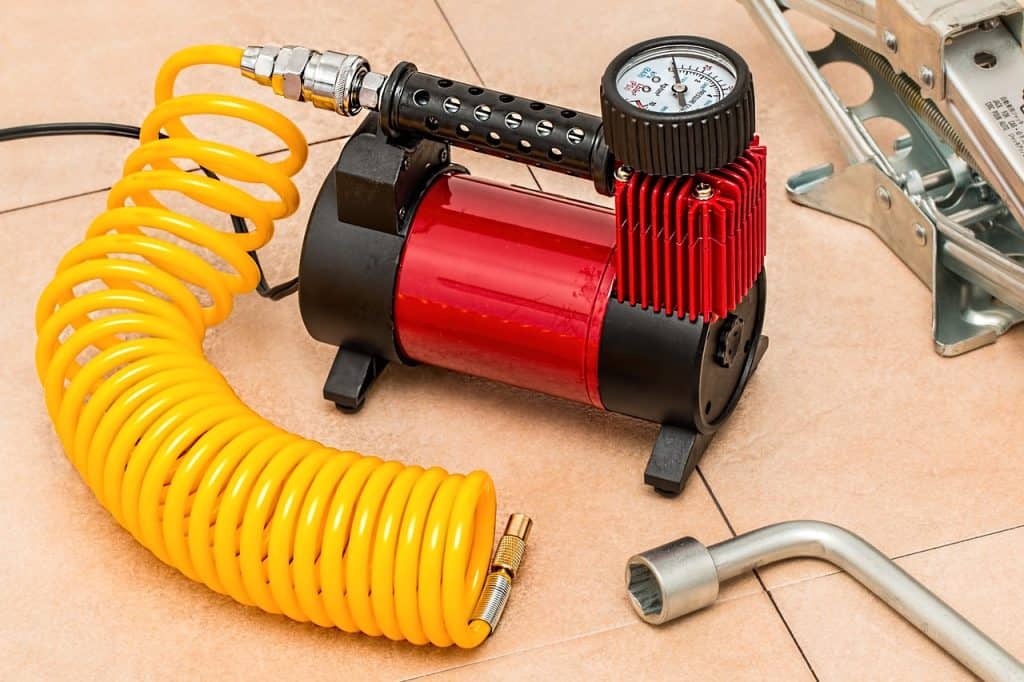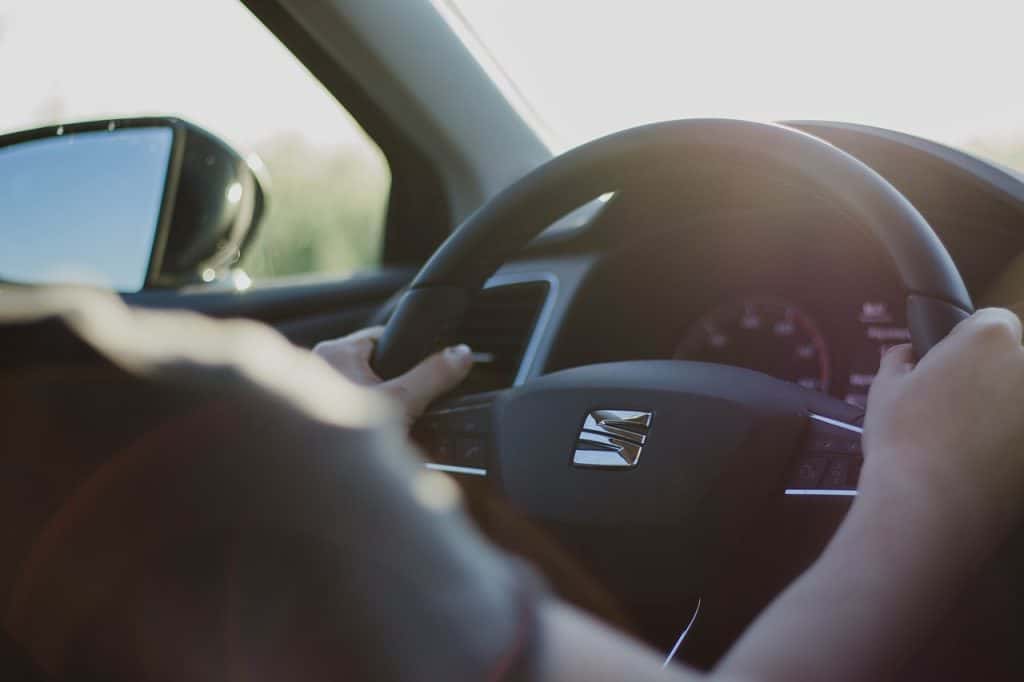Long gone are the days when car tyres needed inner tubes. The modern tyre has at its core a butyl rubber layer (think of it as a built-in inner tube) which, in conjunction with the tyre bead that grips the wheel rim, seals in the air.
Until such time as someone invents an airless tyre that still offers all the benefits of the tyres we use today, it remains a car owner’s task to ensure the air pressure in the car’s tyres is correct for the job in hand.
In fact, there is an airless tyre waiting in the wings: Announced in 2019 one tyre brand indicated trials were ongoing for a new type of airless tyre. Lately, though, things have gone a bit quiet so for now we must ensure our tyres are inflated correctly. Carry on reading to learn how to check car tyre pressure.
- This is how to check car tyre pressure:
- Why it’s important to check your tyre pressures
- How to check tyre pressure without a gauge?
- What should my car tyre pressure be?
This is how to check car tyre pressure:
- The right pressure
Tyre pressures are usually identified as being in either ‘psi’ or ‘bar’. The numbers are different but they mean the same thing. The air supply being used may show one or the other, or both.
It is not uncommon for the manufacturer’s recommended pressure to be different for the front and rear tyres. For the most part, this may be because the front tyres have to steer and bear the weight of the engine, working harder.
Further, it is usual for different pressures to be recommended for different loads on the vehicle. For example, a car that usually has just the driver on board will need different tire pressures to a car that is loaded with family and luggage. See below.
- The valve cap
That little plastic valve cap has an important role to play. Often, owners can lose a cap, perhaps when checking the air pressure, and don’t bother to replace it. This is a mistake. The valve mechanism is delicate and the cap protects it from road grit and the weather while also providing a secondary seal. Allowing grit to enter the valve could cause air to leak out, causing a slow puncture.
For cars with tyre pressure monitoring systems, an increasingly common safety feature on modern motors, the cap is a vital component and should always be tightly in place.
- The valve itself
Schrader-type valves are almost universal on automobiles thanks to their ability to seal in high pressure. It is a crucial part of the tyre and any tyre fitting service will always recommend that a new valve be fitted with every new tyre.
They are constructed with a rubber outer to allow flexibility and this can deteriorate with age, just like the tyre itself.
The valve allows the ingress of air at high pressure to inflate the tyre, just in the same way that a parent will inflate a child’s rubber ring. When screwed to the valve, the hose connector pushes the valve down allowing filling.
When released the valve springs back to make the seal. A damaged valve will leak air so keep an eye on them. If a leak is suspected, then a little soapy water on the valve stem will show bubbles if air is leaking.
- The Air Line
Most garage forecourts will have an air line for customer use. There is usually a small fee to pay. Perhaps more conveniently, owners can buy a combined tyre pressure gauge/pump that connects to the 12v volt socket in the vehicle.
These pumps are not expensive and a little research will reveal the most accurate, which should be to within less than 1psi. They can be carried in the car.
- The pressure gauge
Some air lines will have a read-out gauge at the point of connection with the valve. Others will have the gauge somewhere on the device. Watch the pressure rise as the compressed air flows in.
If using a tyre pump that does not have a gauge it is necessary to source a hand-held unit to check the pressure before, after and during the procedure. They can be purchased online or at a motor factor and don’t cost a lot.
- Checking tyre pressure
Remove the valve dust cap and inspect the valve. Some air line hoses will screw onto the valve end, others will press down. Press the start button or switch and monitor the air pressure gauge until the correct psi number is reached.
Immediately cease pumping, remove the hose and refit the valve cap, ensuring it is tight. It’s important to check all four wheels to ensure balance and don’t forget the spare wheel if carried. Job done.

- About tyre pressure monitoring systems
These are now mandatory on all new cars sold. Readouts or displays may differ, but they all do the same job. If a tyre is deflating the dashboard readout should show it.
If a warning light or pictogram does indicate a problem, the driver should stop when it is safe to do so and check that wheel or wheels for tyre failure or a leak of air from the tire. If so, immediate action is required so check in with a garage or fast-fit tyre centre as soon as possible to seek advice.
Why it’s important to check your tyre pressures
Car owners need to be honest with themselves. If asked how often we check our tyre pressures, it’s likely that the answer will not be, ‘every week’. It is no good saying that ‘they look okay’ because visual inspection alone does not work.
The internal tyre pressures can be way out without any apparent change in the look of the tyre. Failure to check pressures over an extended period of time could mean that the psi could drop by half before there will be any discernable difference.
Thus, the need to check the air pressure in the tyres is paramount to the smooth running of the vehicle. The car will drive better, it will be properly economical and it will be, crucially, much safer.
Yes, as a ‘worst case scenario, failure to check tyre pressures could endanger the occupants. At best, a slowly deflating tire could cause a breakdown.
How do I check/find the correct tyre pressure for my car?
Every car manufacturer releases data about their vehicle. The handbook supplied with every car contains all that the owner needs to know about the operation and routine maintenance.
Somewhere there will be a tyre pressure guide for the supplied tyres. For driver convenience though, the correct recommended tyre pressures can usually be found on a sticker or plate found on the driver’s door jamb or inside the fuel filler cap.
How to check tyre pressure without a gauge?
Debatably, an expert eye could possibly judge if a tyre is over- or under-inflated but the untrained eye probably can’t. As a guide, and only that, heavily weighted hand pressure may help indicate if a tyre is too soft, or indeed too hard.
Similarly, bearing weight down on the car bodywork to deform the tyre may offer some insight but, if doubt exists then it is better to go straight to a garage or tire service and get them checked. Better still, keep a hand-held tyre pressure gauge in the glove box.
How to check tyre pressure at a petrol station
Most garages will provide an air line with a gauge somewhere on the forecourt, usually handily sited when driving away from a fuel pump. There’s often a vacuum cleaner too. There will no doubt be a small charge to pay but that’s commerce.
It’s a simple matter to park adjacent to the air pump after filling up and the air line will be long enough to reach around the car to all four wheels. Proceed as outlined above.

There is however a caveat to this: Not all fuel stations are rigorous in regularly calibrating their pressure gauges. If this is the case it is conceivable that the read-out could be inaccurate, occasionally wildly so.
If this is a concern, why not ask the attendant how recently the gauge was calibrated? If the answer doesn’t satisfy then try elsewhere.
In any case, your local trusted garage or tyre service will likely check the pressures with accurate equipment for free. That’s good customer care.
Services like this are invaluable to people who may not be physically capable of doing the job themselves or are simply not aware of how to. Also, we don’t all fill up with fuel every week which means we may not be checking pressures often enough.
What should my car tyre pressure be?
This varies. Different vehicles with different uses will have different ratings. The owner’s starting point is the sticker on the door or the handbook which gives recommended pressures. Often there will be load variations; a heavy load will differ from a light load.
How often should I check my car tyres pressure?
Every week without fail as a general rule. Also and additionally, before every long run or family day out, especially if the vehicle is laden.
Where can I check my tyre pressure for free?
Some garage or tyre fitting services may well offer free tyre pressure checks. This makes good business sense as it may result in the appreciative owner returning when the time comes for new tyres.
These suppliers are very well aware of the road safety angle. Car owners can also purchase air pressure pumps and gauges for home use. After the initial outlay, pressure checks will always be free!
How often should I change the tyres?
How often we change our tyres depends on use. The law requires certain minimum standards for tyre wear; a fact regularly publicised. Tyre wear is also checked when the car receives an MOT test.
Tyre wear and tear is easily checked by physical inspection. If there are any bulges or cracks or if the tread is unevenly worn or if the main grooves are too shallow, then it is time to get a new set. Remember the 20p test? Even if a car is a little used, tire still age and degrade, so if in doubt, have them inspected.
Problem with driving with underinflated tyres
An under-inflated tyre will bulge outwards at the sides but may not be fully in contact with the road in the centre. This can result in the following:
- The car will be unstable and thus not safe to drive.
- The tyre will wear quickly, and unevenly and shorten its useable life.
- The fuel economy will suffer by as much as ten percent.
Problem with driving with overinflated tyres
Over-inflated tyres will be hard and bulge in the centre of the tread. The outsides of the tyres, so important for grip, may not be in contact with the road. This can result in the following:
- Tyres will wear heavily across the centre section.
- They will not offer so much grip.
- They will not be as comfortable for passengers.
Does tyre pressure affect fuel efficiency?
Very much so. If tyres are not inflated to the correct recommended pressures, fuel consumption will be adversely affected. The tyres will bend and deform more, leading to greater rolling resistance and thus extra fuel consumption. As little as a one percent drop in tyre pressure will have an adverse effect.
Does tyre pressure affect steering?

Yes, it certainly does. Too much air and the tyres will be stiffer and not respond as well to road hazards like potholes, which in turn can affect car control and potentially have an adverse effect on suspension through hard impact.
Conversely with under-inflation, the side-walls sag and lose structure causing excess friction which in turn creates steering lag, lowering wheel response times and increasing braking distance. Extra heat is also generated which ultimately could result in a tyre blowout.
Summary – How to check car tyre pressure
Regular tyre pressure checks improve safety and add value
Tyres, although a necessary component of a car, are not a cheap consumable and it pays an owner to make sure the maximum value is derived from that. Making tyres last means checking them regularly and that includes the air pressure.
As indicated above, the simple exercise of weekly tyre pressure checks ensures that owners can get the most from those rubber hoops in terms of safety and longevity. It’s a simple job that any able person can do and it takes about ten minutes. That’s not so bad is it?
